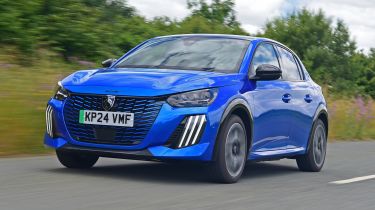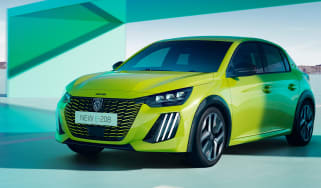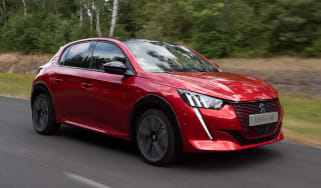Peugeot E-208 review
The Peugeot E-208 is a desirable electric supermini, but it’s also quite an expensive one
Pros
- Stylish looks
- Hi-tech interior
- Tidy handling and performance
Cons
- Awkward driving position
- No proper cable storage
- Pricey for a small car
Peugeot E-208 verdict
Few small electric cars can quite match the Peugeot E-208 when it comes to kerbside kudos, and a mid-life facelift has made this supermini even more attractive. A bigger battery means it can travel further on a charge, too. However, while the E-208 is decent to drive, so are most of its competitors, and many of them offer longer ranges, more standard equipment and lower starting prices, too.
Details, specs and alternatives
The Peugeot E-208 has been around for a while now. It was the French maker’s first electric car, originally going on sale in 2019, and it has since been joined by several models such as the E-308, E-3008, E-5008 and E-Rifter.
In order to keep up with an increasing flow of new electric supermini competitors, the E-208 received a major facelift in 2023. Upgrades included a larger battery pack, newer technology and refreshed styling. These tweaks were crucial in order to help the Peugeot maintain its appeal against cars such as the Fiat 500e, Vauxhall Corsa Electric, Citroen e-C3, MINI Cooper, BYD Dolphin and MG4.
As before, the E-208 is still available with a 50kWh battery pack which is paired to a 134bhp electric motor, and this powertrain returns a WLTP combined range of up to 225 miles. As part of the facelift, though, a slightly larger 51kWh pack was introduced as an option for the range-topping GT trim, and that tiny bit of extra capacity boosts the E-208’s WLTP combined range up to a maximum of 258 miles.
The larger battery is accompanied by a more powerful 154bhp electric motor, but there’s actually very little difference in terms of performance between the two powertrains. All E-208 models are able to charge from 10-80% in around half an hour thanks to 100kW DC rapid charging.
The trim structure for the E-208 has changed several times since the car originally launched, and today buyers have the choice of Active, Allure and GT specifications. The list of standard equipment is relatively strong, with all cars getting LED headlights, a 10-inch touchscreen with Apple CarPlay and Android Auto, climate control and rear parking sensors. Top-spec cars get luxuries like larger wheels, heated seats, digital dials and a reversing camera.



